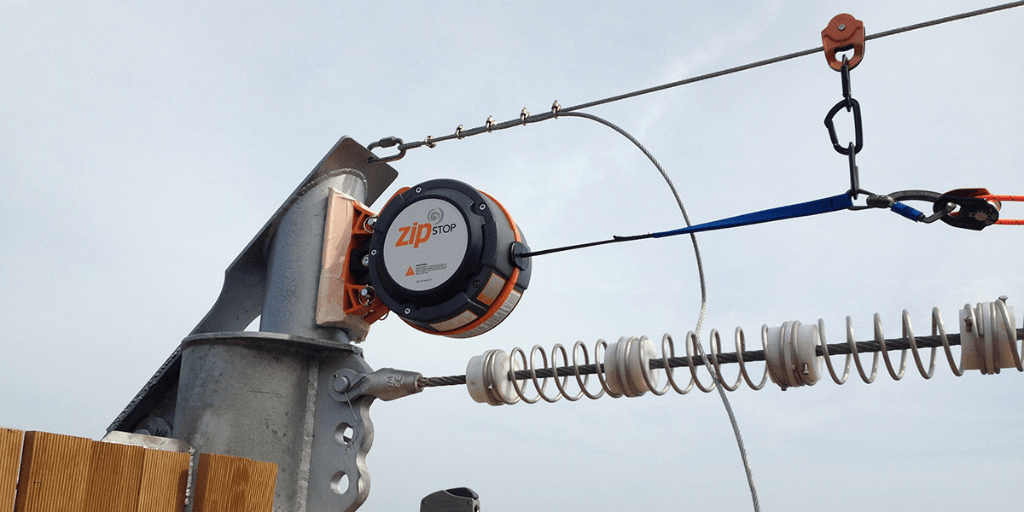
Zip line adventures have gained immense popularity, pushing the industry to innovate by creating longer, faster, and more thrilling experiences. As the demand for zip lines increases, so does the need for advanced safety measures. A crucial aspect of zip line safety is the brake system, particularly the implementation of Emergency Arrest Devices (EADs). This comprehensive guide will explore the essentials of zip line brake systems, EADs, and how to choose the right braking solution for your zip line adventure.
The Importance of EADs in Zip Line Braking Systems
An EAD is an independent brake system specifically designed for zip lines, offering protection against operator errors and equipment failures. With zip line experiences pushing the boundaries of speed and distance, EADs have become a hot topic in the industry, ensuring the safety of participants in case the primary brake fails.
Zip lining is a popular adventure sport that involves riding on a cable from one point to another, often at high speeds. With such an exhilarating activity comes the risk of accidents, which is why safety measures are crucial. EADs, or energy absorbing devices, are a critical component of zip line braking systems. EADs are designed to absorb the energy of a moving object and reduce its velocity to a safe level, which is important in preventing injury and fatalities.
The use of EADs in zip line braking systems can improve the safety of the activity by reducing the stress on the cable, braking mechanism, and rider. This reduces the risk of accidents and ensures that the rider can safely reach the end of the line without injury. Furthermore, EADs are an important aspect of compliance with industry standards and regulations, and their proper use can help prevent legal issues that could arise from accidents.
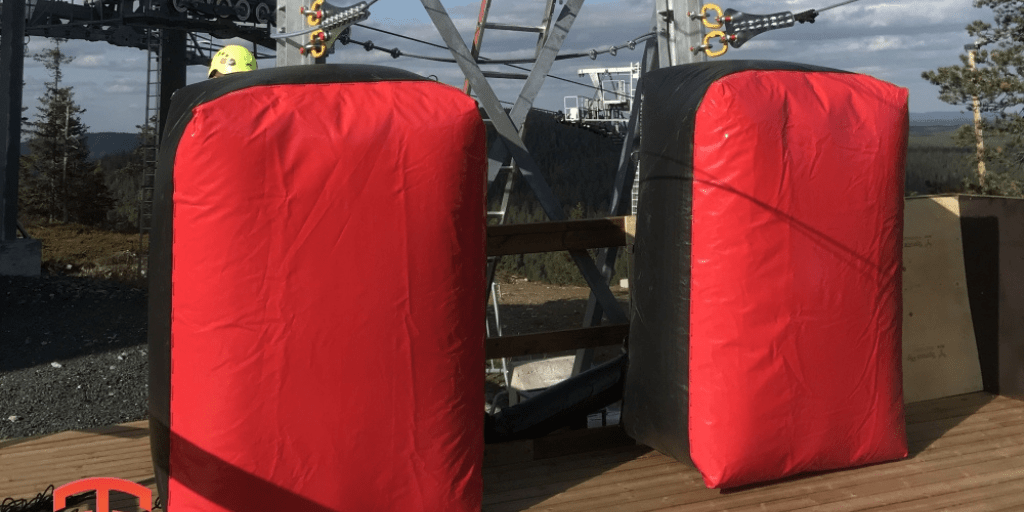
Regulatory Bodies and Their Stance on EADs
Two key organizations that regulate zip line safety are ASTM International and the Association for Challenge Course Technology (ACCT). Both organizations have different approaches but agree that brake systems must bring participants to a safe stop even in the case of primary brake failure.
ASTM International’s View on EADs
ASTM International emphasizes the responsibility of designers and engineers to determine appropriate deceleration systems by performing failure analysis. While not explicitly defining EADs, ASTM requires that the amusement ride is safe even when everything fails as anticipated by the designer.
ACCT’s View on EADs
ACCT has a more straightforward approach, requiring an emergency brake that is completely separate from the primary brake system or integrated as a backup feature. ACCT also provides clear guidelines on when an emergency brake is required.
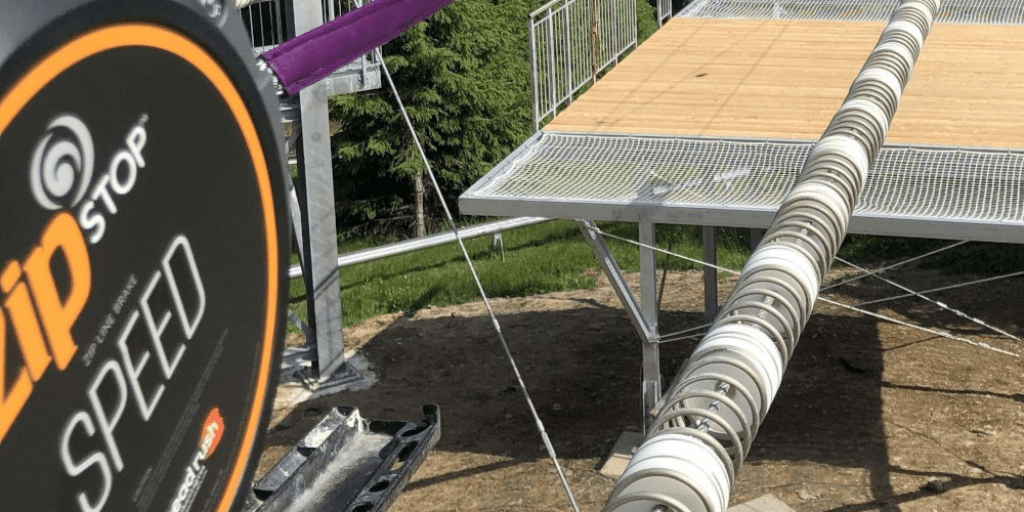
Choosing the Right EAD for Your Zip Line
Considering the range of builders, installers, designers, consultants, and engineers in the aerial adventure industry, selecting the right EAD for your zip line can be a challenge. Here’s a step-by-step guide to help you make an informed decision:
- Consult your designer/engineer: Discuss your concerns and requirements with a specialist to ensure the right fit for your operation.
- Get opinions from other operators: Talk to operators who have installed the EADs you’re considering to gather honest feedback and real-world experiences.
- Verify the product’s use with the manufacturer: Ensure that the device’s implementation aligns with its intended scope, design, and operation.
- Test rigorously: Follow the testing programs of the EAD device supplier and the ride manufacturer, document the results, and ensure compliance with safety standards.
- Inspect and maintain: Adhere to the requirements and recommendations provided by the device and zip line manufacturer(s) for regular inspection and maintenance of your EADs.
Popular EAD Options
While the suitability of an EAD depends on the specific zip line characteristics, some popular options include:
zipSTOP: Featuring a state-of-the-art magnetic braking system, the zipSTOP is designed to gradually slow down riders as they approach the end of the zip line, ensuring a smooth and controlled stop every time. Unlike other zip line brakes that rely on friction or complicated mechanical systems, the zipSTOP is incredibly easy to install and operate, making it a popular choice for both professional and amateur zip line operators.
Spring Packs: A simple and reliable solution that requires ample space for effective braking. Designed with safety in mind, this innovative spring brake system uses a unique combination of springs and shock absorbers to slow riders down gradually as they approach the end of the line. This means you can enjoy the excitement and thrill of ziplining without worrying about coming to a sudden, jarring stop at the end.
The Zipline Spring Brake is incredibly easy to install and use, making it a popular choice for both amateur and professional zipline operators. Its durable construction and reliable performance mean you can count on it to keep you and your riders safe for years to come.
Zipline Airbag EAD: the ultimate emergency arrest device for ziplining professionals! This high-quality airbag is designed to provide a safe and reliable means of stopping riders in the event of an emergency, ensuring maximum safety and protection for everyone on the line.
Featuring a durable construction and reliable performance, the Zipline Airbag EAD is capable of handling a wide range of rider weights and speeds, making it the ideal choice for both amateur and professional zipline operators. Its easy-to-use design means you can quickly and easily deploy the airbag in the event of an emergency, giving you and your riders peace of mind and the confidence to enjoy your ziplining adventure to the fullest.
Get in touch to discuss your Zipline
With the zip line industry’s constant evolution, ensuring the safety of participants is paramount. By understanding the importance of EADs and following the guidelines outlined above, you can make informed decisions that will provide your guests with thrilling yet safe zip line experiences.
The integration of technology into zip line operations can further improve safety. For instance, advances in materials science may lead to the development of stronger, lighter cables and harnesses. Additionally, harnessing the power of data analytics can enable operators to identify trends and patterns, allowing for more informed decision-making in areas such as maintenance scheduling and risk mitigation.
In conclusion, maintaining safety in the rapidly growing and evolving zip line industry is a multifaceted endeavor. Ensuring the appropriate EAD is chosen for each zip line is just one aspect of providing a secure experience for participants. Through continued collaboration, innovation, and adherence to safety best practices, the industry can ensure thrilling and memorable zip line experiences while minimizing risk for all involved.
Beyond the Basics: Unveiling Zipline Technology with Expert Analysis
Intrigued by the potential of Zipline technology? You’ve come to the right place! This article provides a solid foundation. But if you’re eager to delve deeper and gain insights from industry experts, keep reading…
- Zip Line Design: Components for a Complete System
- Considering operating and investing in a zipline?
- 9 Zipline Mistakes You Don’t Know You’re Making
- Magnetic Zipline Braking: A Revolutionary Way to Ensure Safe Rides
- Pros and Cons of Different Zip Line Brakes
- Expert Tips for Zip Line Brake Installations
- White Paper on Zipline Emergency Arrest Devices (EAD)
- The Importance of Optimizing Zip Line Design for Rider Speed
- Does your zip line need an emergency arrest device?
- The Magnetic Self-braking Zipline pulley
- Zipline Braking and landing considerations
- Why Zip Line Trolley Bearings Matter
- Whitepaper: Zipline Braking Dynamics
- Zip Line Installation: Give them the Best Ride
- How to startup a Successful Zip Line Business
-
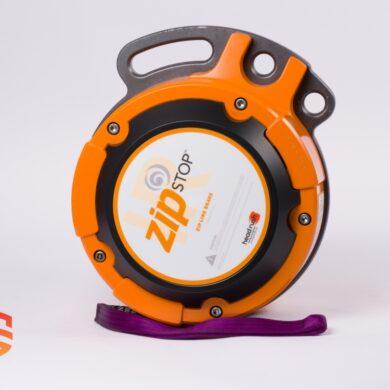 zipSTOP IR Zipline Brake | 24 – 60 kph€ 5.649,00 – € 5.799,00 Ex VAT
zipSTOP IR Zipline Brake | 24 – 60 kph€ 5.649,00 – € 5.799,00 Ex VAT -
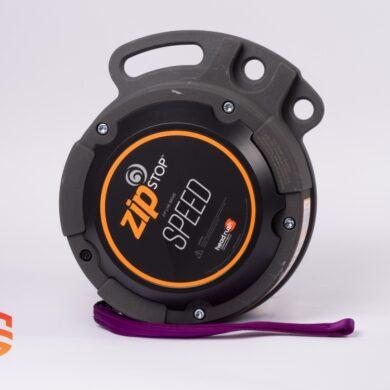 zipSTOP SPEED Zipline Brake | 50 – 72 kph€ 6.099,00 – € 6.349,00 Ex VAT
zipSTOP SPEED Zipline Brake | 50 – 72 kph€ 6.099,00 – € 6.349,00 Ex VAT -
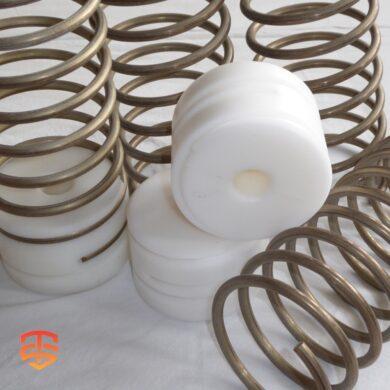 Spring Brake System | Primary & EAD zipline brake€ 80,00 Ex VAT
Spring Brake System | Primary & EAD zipline brake€ 80,00 Ex VAT







